Pax Pamir Second Edition — A great game about The Great Game
If you’ve never heard of Pax Pamir, then you’re probably not a fan of war games or political simulations — and you know what, that’s totally fine. For those who are fans however, the return of Pax Pamir is something that has been long awaited and often discussed. Following a recent (and hugely successful) Kickstarter, Pax Pamir: Second Edition is now shipping thanks to designer Cole Wehrle and his company, Wehrlegig Games.
Firstly, if the name Cole Wehrle is familiar to you, then you may have recognised it in association with our twenty-third highest rated board game ever, where Root is featured. Cole is not shy of designing games with politically charged settings, some readers might feel that Pax Pamir: Second Edition (which simulates the contest between Britain and Russia for control of Afghanistan during the 18th Century) is a step too far. Fear not, however, because this is not a game about glorifying colonial dominance — it is, in fact, the opposite.
Pax Pamir: Second Edition is a game about manipulating both (or in fact all three) sides, in this conflict. Each of up to five players can find themselves allied with the British, the Russians or the local Arab leadership at any point during the game. By playing cards that influence both the board state and their own court, those players will advance their position of power in the region.
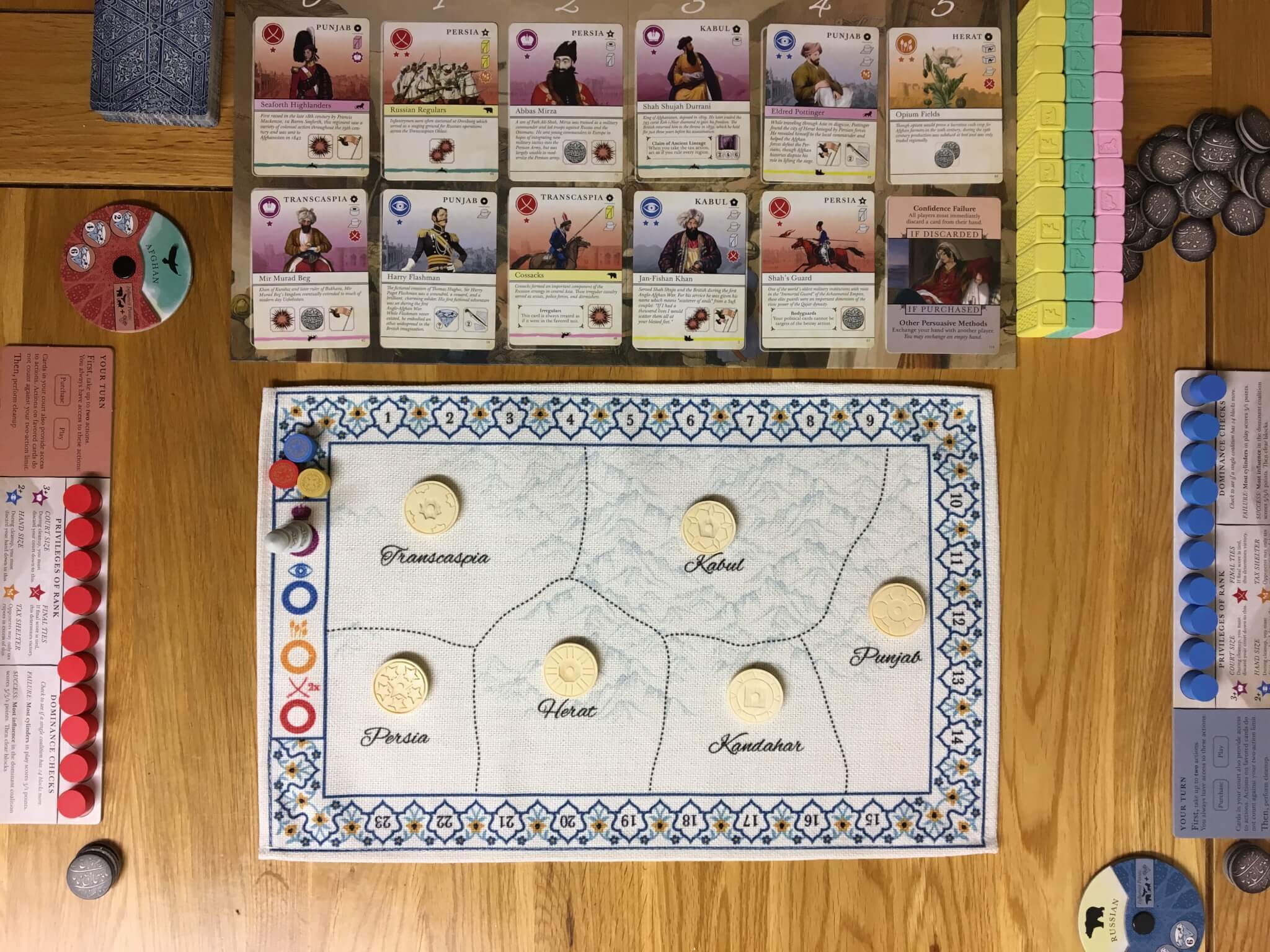
The large powers are not directly represented by any player, but the placement of their armies, as well as where they choose to build roads, is. Play a card from your hand that adds Russian forces to a region and you’ll strengthen their position their — which will likely also swing your allegiance dial towards them and force any other non-neutral cards out of your court. After all, a British ambassador could hardly be seen hanging around with a chieftain that was responsible for giving the Rus control of Kabul.
Cards played in this way must first be taken from a large, shared marketplace. At any time, players can take a card from the marketplace as one of the two actions allowed each turn, but in classic form, taking cards that have just appeared in the game will always cost more coins. Coins spent this way will be placed on each card in the row that precedes the one taken, and when the cards that are skipped over are taken, the player who opts to have them will take any coins in place.
As cards are bought and taken into hand, there’s a small element of memorisation that plays its part in Pax Pamir: Second Edition. Did your neighbour just take an Afghan card, when up until now they have seemed to favour the British? That might be worth remembering. Then again, after another five or six turns, and with up to five players, who can remember everything? When a card is played, a cost will sometimes need to be paid and various effects will take place — card placement also costs the player one of their two actions.
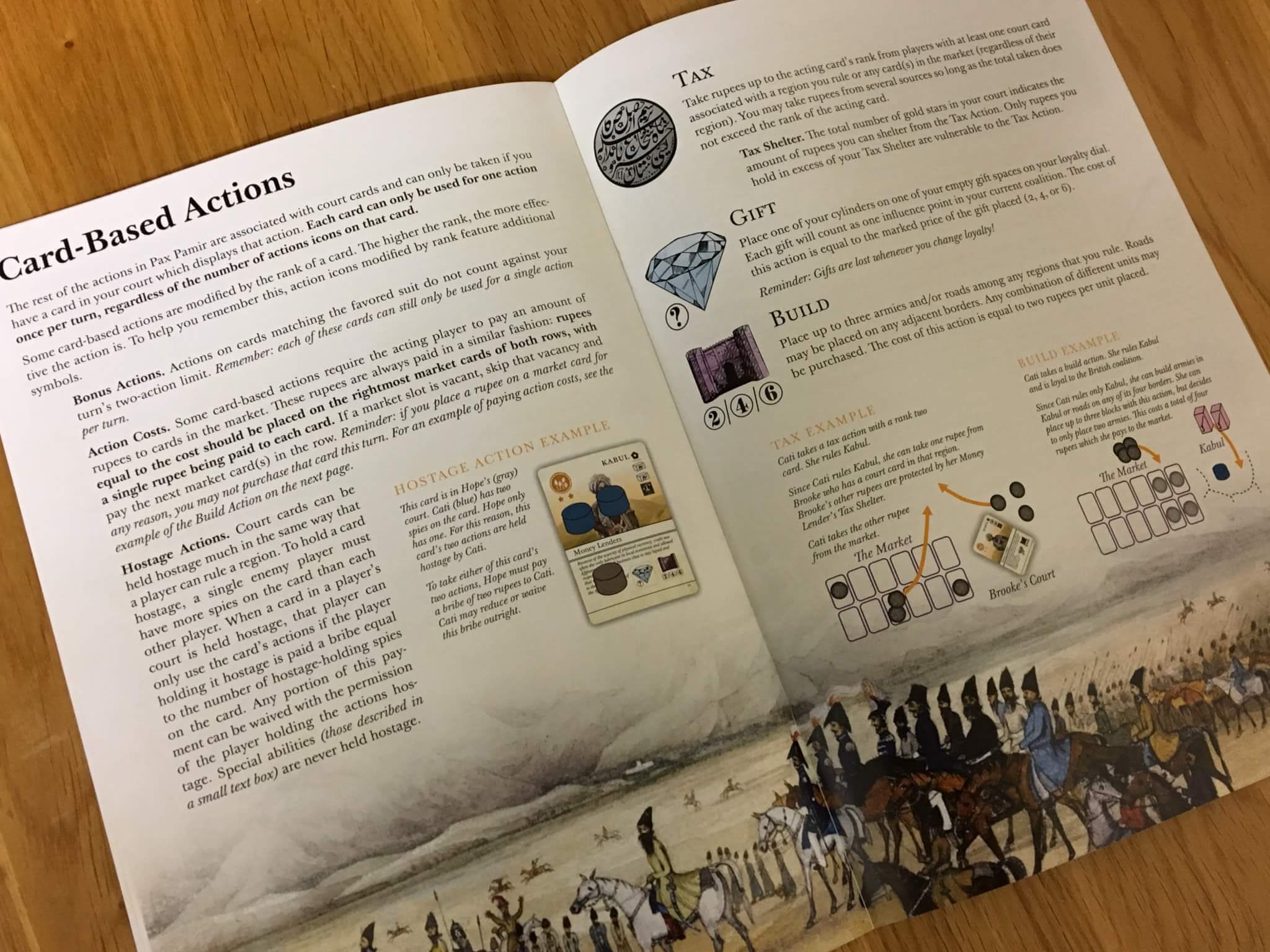
Early turns of Pax Pamir: Second Edition tend to follow a reasonably set formula, with the players taking cards and often playing them the same turn, building out their court and setting themselves up for the first scoring round — known as a Dominance Check. Cards have many effects, including the placement of Imperial armies and roads, whilst some allow the players to actually place their own tribes into regions, effectively giving them control where they have a majority.
Some cards come with more complex possibilities, such as additional actions that can be taken, though players should bear in mind that they can still only take two actions per turn. Some cards offer the chance to place one of your tribe disks onto a card in someone else’s court. This essentially indicates that you have taken that card hostage or obtained some leverage over them that may allow you to influence what they can or can’t do later.
As Pax Pamir: Second Edition continues, so does the number of smaller and more intricate rules, allowing for a level of depth that rewards repeated plays, but which also allows for relatively inexperienced players to pick up the game easily. The core mechanics are very, very simple, but the increasing number of options on a turn, and interactions between the players, means that things rapidly become fairly strategically heavy.
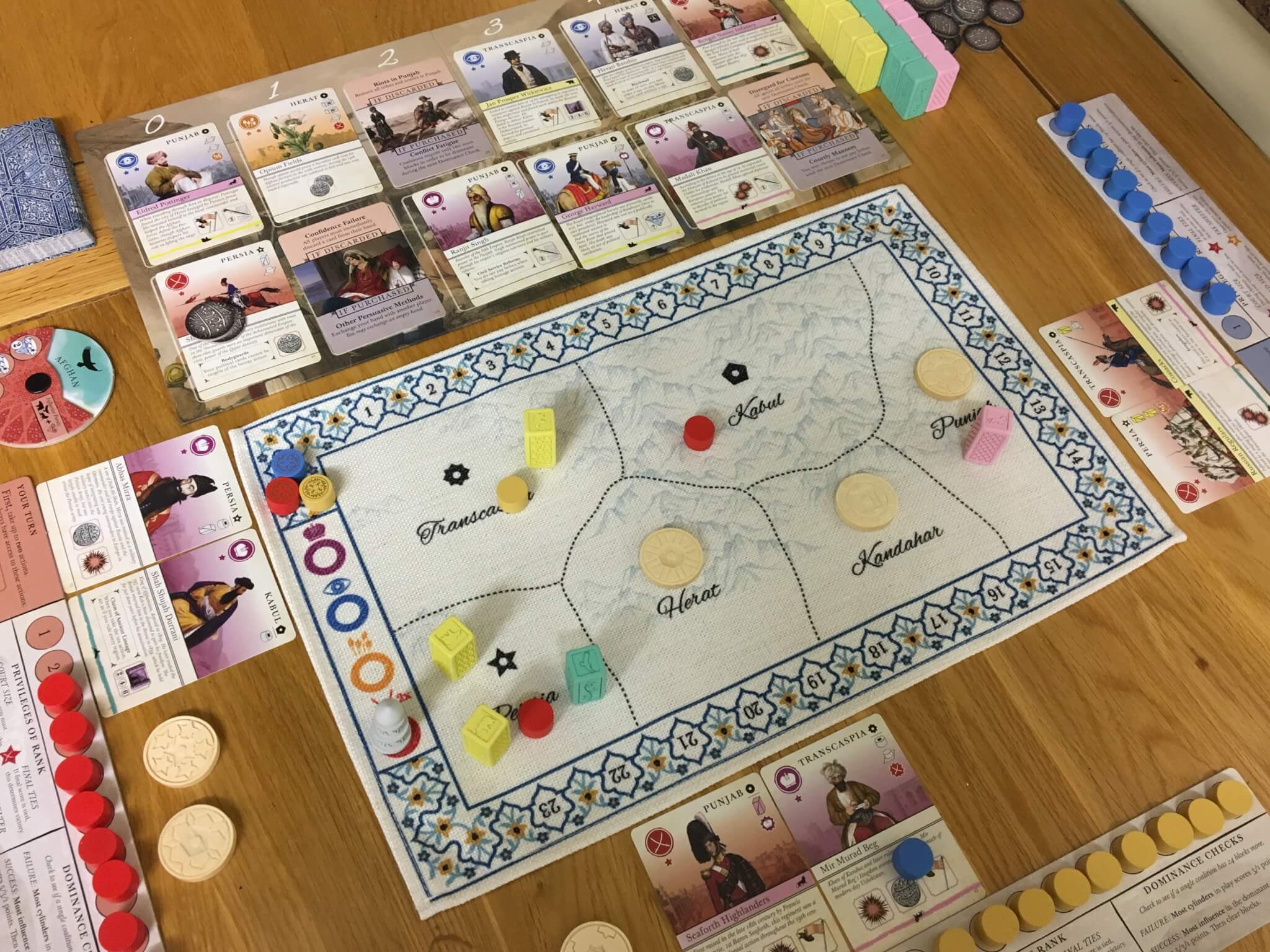
A lot of this is driven by the scoring system, which is linked to the Dominance Checks that I mentioned earlier. Cards denoting these checks are seeded somewhat randomly into the marketplace deck, alongside court and event cards. When one such Dominance Card is purchased, when two appear at the same time or when one would be discarded from the marketplace, a check takes place.
To simplify them, Dominance Checks are a measure of which empire controls most of Afghanistan based on the resin blocks that represent their roads and armies. If one empire is dominant, then it will have at least four more blocks than any other empire, and in such cases, players loyal to that empire (as denoted by the number of influence symbols they have) will score five points, where as second place, three points and third place, one point. Ties are friendly, with the points shared added up and shared (ie, four points each for the first and second player, if both have the same influence.)
There are a couple of things that make Dominance Checks especially interesting, including the fact that if any player is ever four points clear ahead of the rest, then the game ends immediately and that player wins. This fact results in the other interesting thing, which is that it’s actually quite rare for one faction to be completely dominant — because it’s not usually in the majority of players interests to allow it.
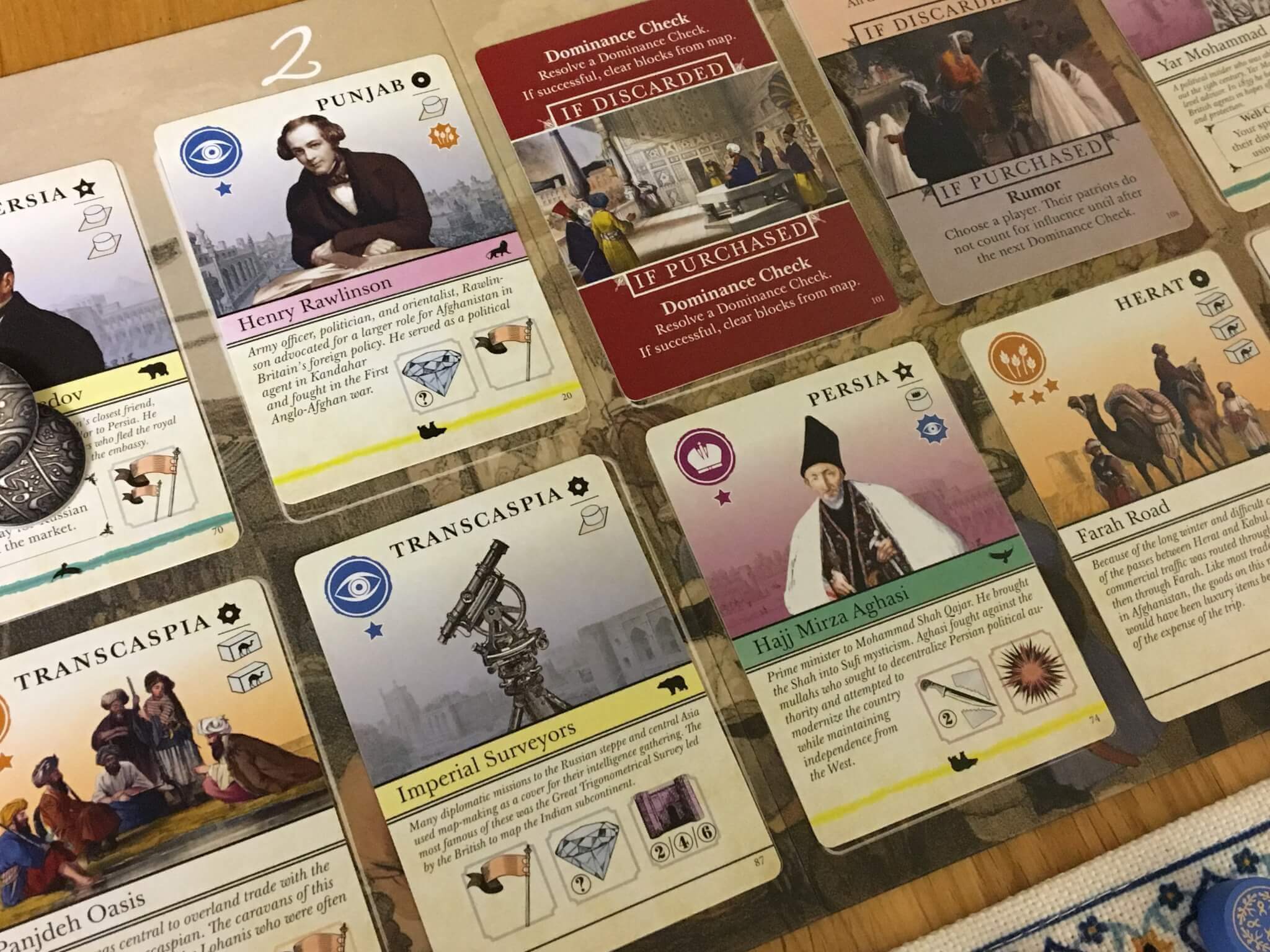
In cases where no empire is dominant, the points awarded during a Dominance Check will be determined by how much tribal influence each player has. This is determined by how many disks they have placed, either onto the board (as controlling interest) or in the form of spies, which are the disks placed in other courts. The highest scoring player in these circumstances will only score two, making the game much tighter as a rule than you might imagine.
Given the sandbox nature of the game, you’d think that Pax Pamir: Second Edition could lead to some fairly wild scenarios, especially with more experienced players, but in all the games I’ve played, it has come across as incredibly intuitive and yet very rewarding. The players seem to understand the act of attracting courtiers and then placing them into their court, as well as the act of placing a disk onto the board to control it or into another court to spy on the enemy.
As new actions are introduced, they remain simple and clear — sometimes you’ll want to take a card just so that it allows you to take a new action, like Tax, even though in purchasing and playing it, you won’t be able to advance your actual influence in any meaningful way. Everything has a clear purpose in Pax Pamir: Second Edition and the size of the market is such that you’ll usually feel spoilt for choice, rather than restricted.
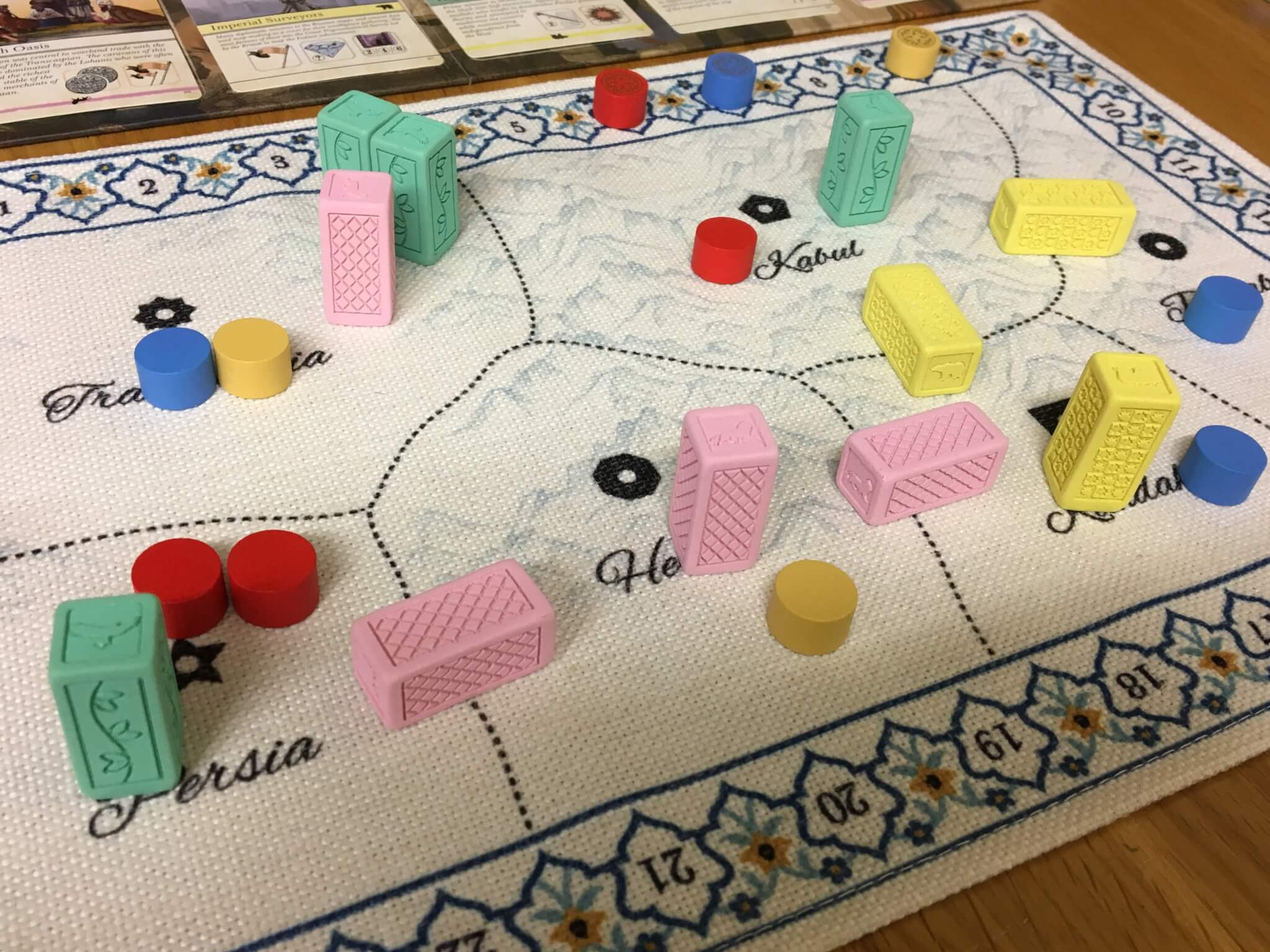
Aside from creating an immersive and engaging experience at a mechanical level, Pax Pamir: Second Edition also achieves something that I think is rare and sought after in games. It secretly educates those playing it. Yes, events and couriters appear randomly and there’s no doubt that what happens on the board is an abstracted version of the reality (after all there are no battles as such and the regions are split very broadly) but even so, The Great Game plays out before your very eyes.
Pax Pamir: Second Edition does a superb job of representing the various machinations of the age. Local tribes wrestle for the slightest edge, even as their country is occupied by foreign invaders. Powerful individuals rise at one court, whilst a well placed spy from a jealous neighbour quickly undermines them and tears them down. Some cards represent the more mundane aspects of elongated wars in distant lands — with logistics, trade and food supplies playing key roles.
And after all of this, I’ve barely even mentioned the components, which are among the most pleasant that I’ve ever seen in a board game. Wait, did I say board? Pax Pamir: Second Edition is played on several boards (for the players and the market) but the central focus of the players will actually be on the map of Afghanistan itself, which is a fold out cloth, almost like a tea towel — and believe me, it works perfectly.
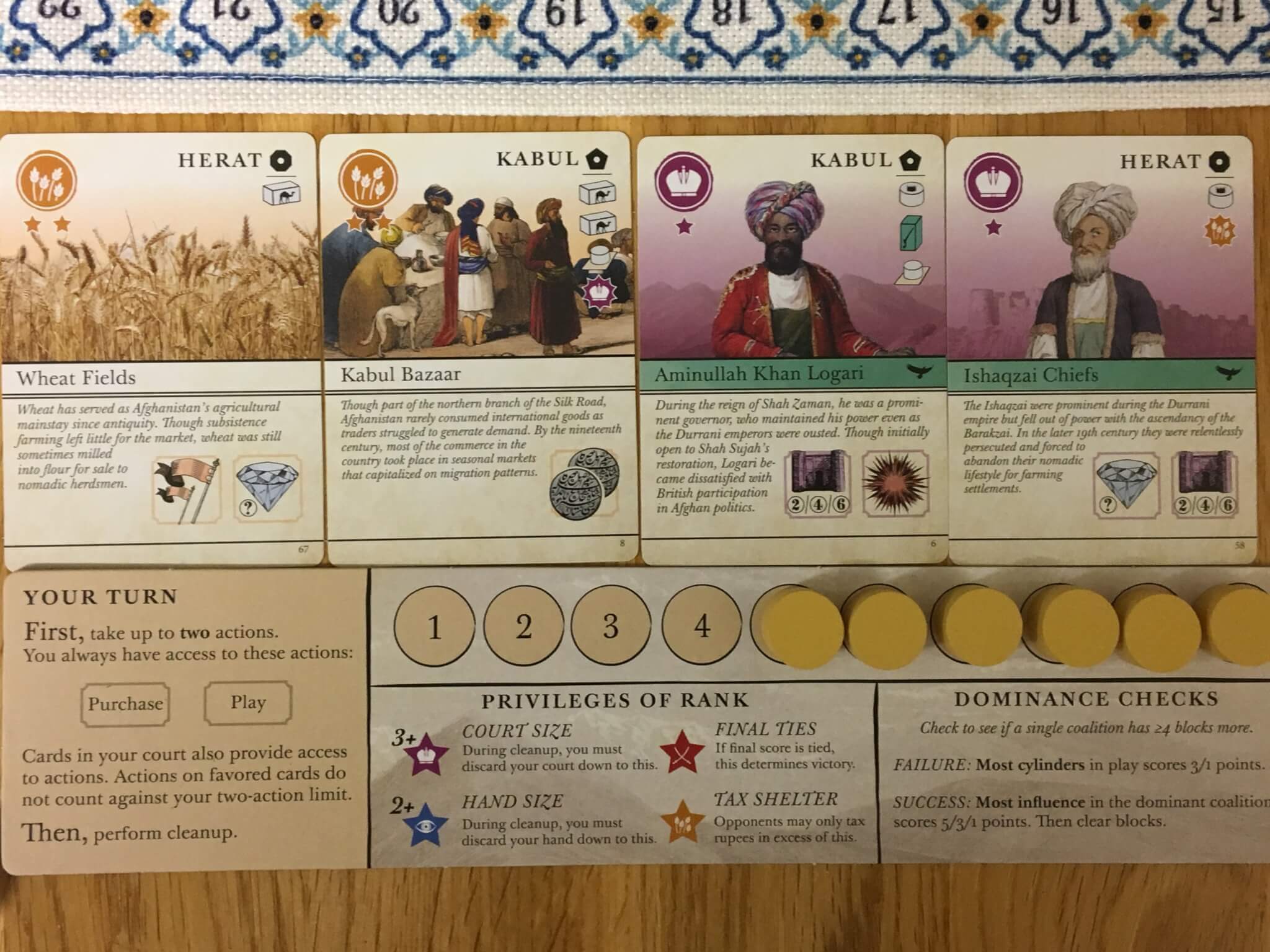
In addition to these playing areas, the deck of cards included in Pax Pamir: Second Edition is large and beautifully illustrated, with a mildly stylised alternative to the fine art of the era showing each character or scene. The cards contain a significant amount of information, but luckily each one is clearly laid out with good iconography and clear rules text where needed. Flavour text is occasionally used to enhance the card, providing just enough information to cause players to pop off to Wikipedia from time to time in order to learn more.
Various tokens and other pieces make up the remainder of the components — which are few and purposeful. For a game that ultimately ends up feeling large and sprawling, the actual number of pieces is pretty sensible. There are coins, disks for each of the five player colours and then a set of control markers to show who owns which province. Finally, there are the large resin rectangles that represent the three main empires. These pieces are large and chunky, with embossed logos showing each faction symbol, and thanks to their size and visual impact, they finish the game off nicely.
Ultimately, Pax Pamir: Second Edition is one of the best games I’ve played in 2019, but it’s also an important and exceptional game that I think I’ll be playing for years to come. It feels like a game that I’ll play somewhat infrequently, perhaps only a few times a year, but it’s one that brings with it a sense of intrigue, excitement and occasion that not every game can. In summary, it is a must have for a serious board game collector, a fan of war games or someone who loves to remake history.
Pax Pamir: Second Edition is available for purchase now. You can find out more about it via the website of publisher Wehrlegig Games.

Comments are closed.